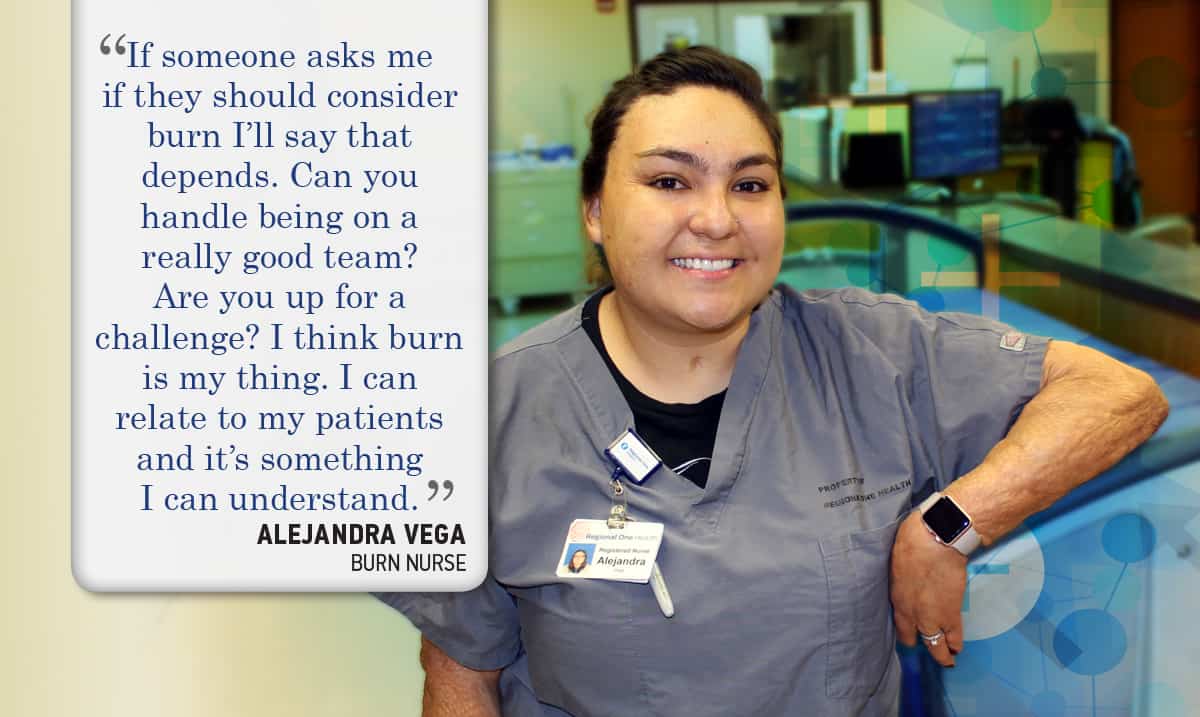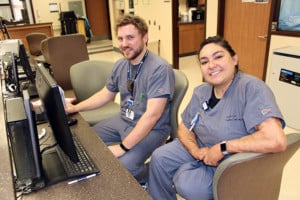 Much of that day in 2002 was like any other for a typical 11-year-old girl. But typical ended shortly after Alejandra Vega and her two younger siblings returned home from school that afternoon.
Much of that day in 2002 was like any other for a typical 11-year-old girl. But typical ended shortly after Alejandra Vega and her two younger siblings returned home from school that afternoon.
Vega’s family house had a gas leak. The gas smell had apparently disappeared before she arrived home, so Vega had no clue there was a leak when she turned on the kitchen stove to prepare a snack. It wasn’t immediate; in fact, it was about 15 minutes after she turned on the stove that it happened. Vega turned toward the stove with a pot of water when suddenly the oven exploded, blowing fire on her.
“I remember getting up and looking around. There were flames everywhere,” Vega said. “My brother came in screaming. I told him to get out of the house. My sister is screaming in the bathroom. The way the door got burned it locked her in. I pushed it over and we got outside. My clothes had completely melted off. Our neighbors from across the street came over and wrapped blankets around us.”
Today, Vega is a registered nurse in the Regional One Health Firefighters Burn Center, a position she started in January 2016 just after graduating from the University of Memphis nursing school. But 15 years ago, she was in the back of an ambulance outside her Hernando, Mississippi, home.
Her last memory of that day is the paramedic telling her it would be OK. Her next memory is waking up in the Shriners Hospitals for Children-Cincinnati, where she and her siblings were airlifted for its specialized burn care for children.
Vega had first-, second- and third-degree burns across 84 percent of her body. She calls herself a walking miracle, especially considering she had no amputations.
“When I work with my patients and I see them get fingers, arms or legs amputated ’I think, ‘That could’ve been me,’” she said.
Vega was fortunate to escape amputation, but she relates to much of what her patients go through in the healing and recovery processes. The Memphis area has always been home, and her deep connection to burn care pointed her to a true health care home where she could learn among the best at Regional One Health.

“Everybody, even if super busy with critical patients, they’re there to help you in anything.”
“The work environment we have is great because we have an awesome team,” she said. “Everybody, even if super busy with critical patients, they’re there to help you in anything. The nurses who have been there for years are super welcoming and answer any questions we have. You feel like you go to work with a really good team.”
That includes Medical Director William Hickerson, M.D., FACS, who Vega praised as an amazing educator. Like Vega, he has personal experience; he was treated for a burn as a boy.
She said it’s a tight unit, where nurses, staff and doctors have close bonds that also extend to patients. Again, Vega has been through much of what her patients experience, although because her burns occurred at a young age, it was a different situation. Children keep growing but skin grafts don’t so Vega experienced a decade of healing.
“Every time something pulled, maybe skin on my leg or skin on my back, every time I felt a stretch, I’d go back and release that skin and add more to that area so I could stretch that arm or leg,” she said. “That’s why it took 10 years for all of it to come together.”
Today, Vega has no issues. She can stretch her arms and legs, and can walk and run just fine. She’s happy to provide that care to patients that she received as a child, but she does realize it’s not for everyone.
“Burn patients have a hard time regulating their own temperatures so burn units tend to be warm. Sometimes employees from other areas come on the floor and say they don’t know how we work on the floor because it’s hot,” she said. “Burn isn’t for everyone. If someone asks me if they should consider burn I’ll say that depends. Can you handle being on a really good team? Are you up for a challenge? Burn is my thing. I can relate to my patients and it’s something I can understand.”